Sirui Saturn 35mm 1.6x Full Frame Anamorphic Lens (RF mount)
How to get the ultra-wide, big screen Hollywood movie look without breaking your wallet
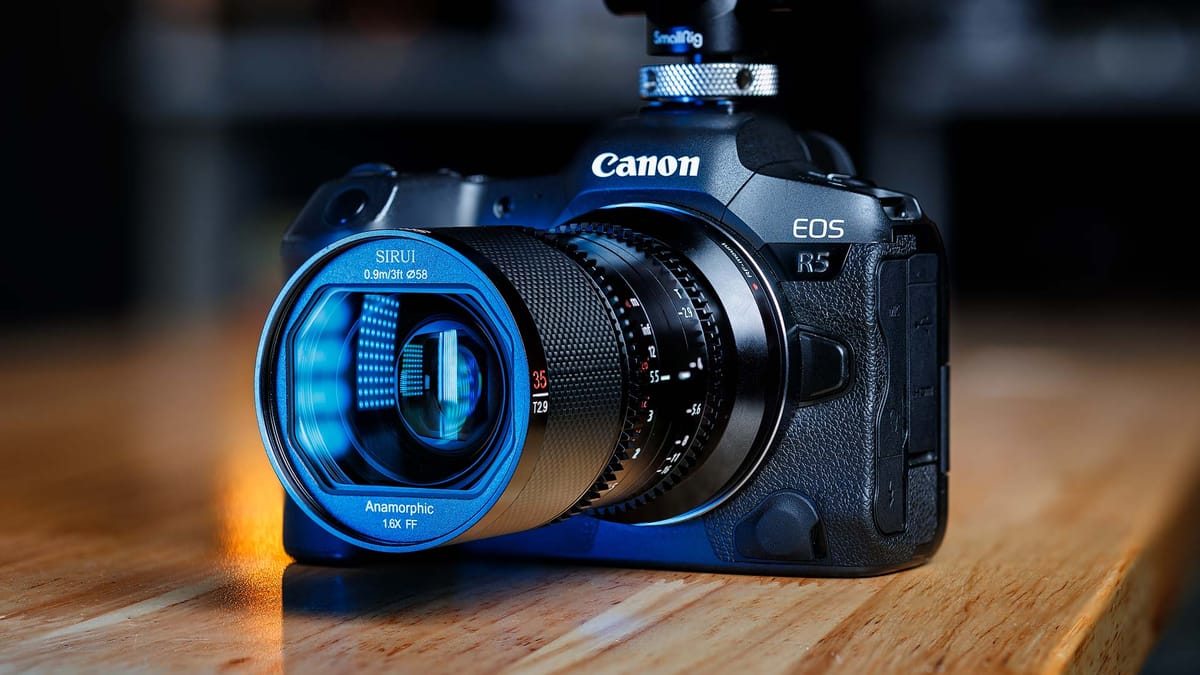
Since the 1950s, the ultra-wide aspect ratio, lens flares, and oval-shaped bokeh of anamorphic lenses have been synonymous with epic, big-budget Hollywood films. Indie filmmakers and videographers have emulated the anamorphic look using homemade oval-shaped cutouts, spherical lens adapters, and fake black letterbox bars. Today however, there are more affordable anamorphic lenses compatible with most prosumer crop-sensor and full frame digital cameras, including Sirui's Saturn 35mm T.2.9 1.6x anamorphic lens ($1,299 MSRP).
The Saturn 35mm is available in Sony E, Fuji X, Leica L, DJI DL, and Canon RF mounts, plus the option of blue or neutral lens flares. For this review, I'll be reviewing the Canon RF version with neutral flares.
- Super lightweight and compact
- Reasonably priced
- Does not flare easily
- Good image quality for the price
- Great for gimbals
- Manual focus only
- No optical image stabilization
- Long minimum focusing distance
- Questionable return on investment
Lens material and construction
Sirui designed the Saturn 35mm to be smaller, lighter, and more compact than other anamorphic lenses. Compared to the similar Venus 35mm 1.6x anamorphic (also made by Sirui), the carbon fiber Saturn is half an inch shorter and just over a pound lighter (0.91 versus 2.05 pounds). This makes the Saturn 35mm a great option when shooting video using a gimbal or even a professional DJI drone supporting interchangeable lenses.
The RF version of the lens mounts confidently to both my Canon EOS R5 and R6, and I don't detect any wiggle or alignment issues. The lens feels solid and tight, comparable to one of Canon's own RF lenses. The focus and aperture rings are de-clicked for smooth focal and iris adjustments, with raised notches for mounting geared accessories.
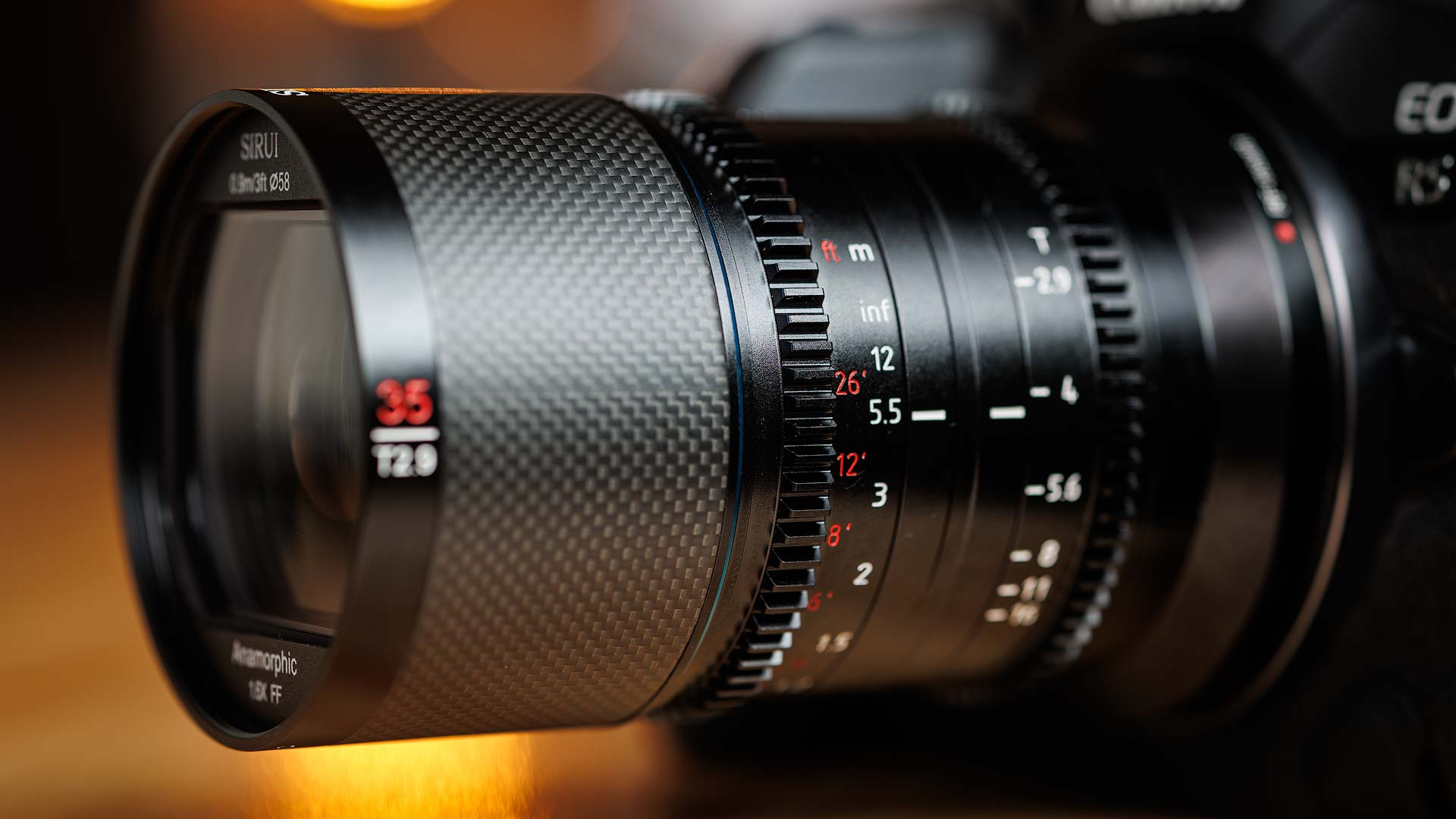
Saturn's filter thread is 58mm, which is rather small for use with matte boxes or filter holders (like Freewell's K2 system). This means you will likely need step-up rings to mount filters with this lens, unless you intend to buy or already own small, 58mm filters. I tested the Saturn 35mm with a 58-82mm Maven magnetized step-up ring and 82mm filters, and this combination worked well. I'll likely pick up a similar step-up ring for the Freewell K2 system as well.
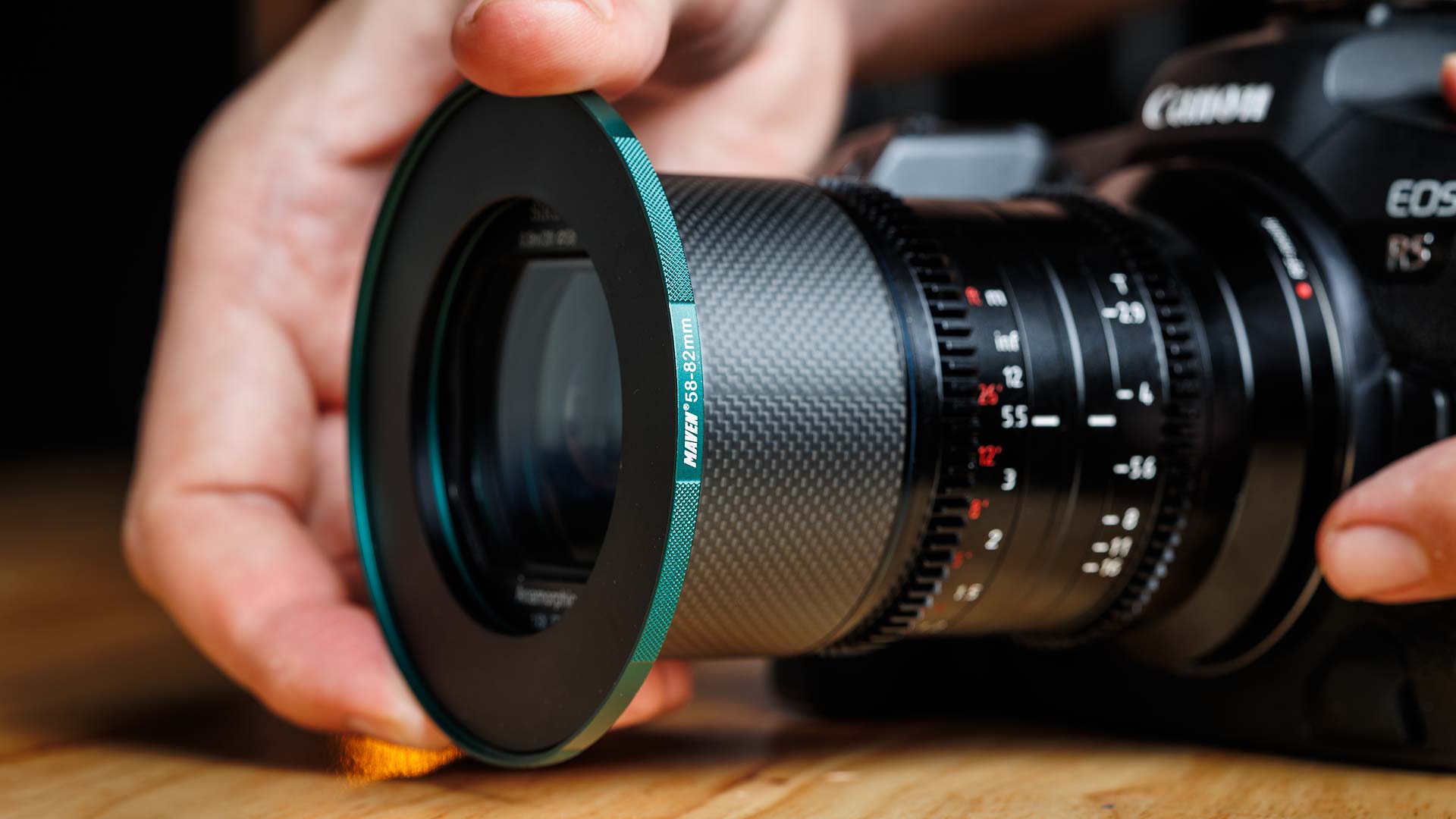
The Saturn 35mm functions similarly to a vintage, manual focus lens. Meaning, the lens and camera do not electronically communicate, so the camera has no idea what type of lens is attached, cannot electronically adjust aperture, auto focus, or optical stabilization. All aperture and focal adjustments must be handled manually.
Focal length
Because the Saturn 35mm is anamorphic and not spherical, focal length functions a bit differently. Field of view is 35mm across the vertical axis, but 22mm across the horizontal. This may be hard to visualize, so I shot a couple 4k videos at 22 and 35mm using a Canon 14-35mm f/4 to illustrate how it works.


If we layer the 35mm video on top of 22mm, then downscale/align the 35mm image to fit, we get the following composite image. The orange highlight represents the anamorphic field of view captured by the Sirui Saturn 35mm.
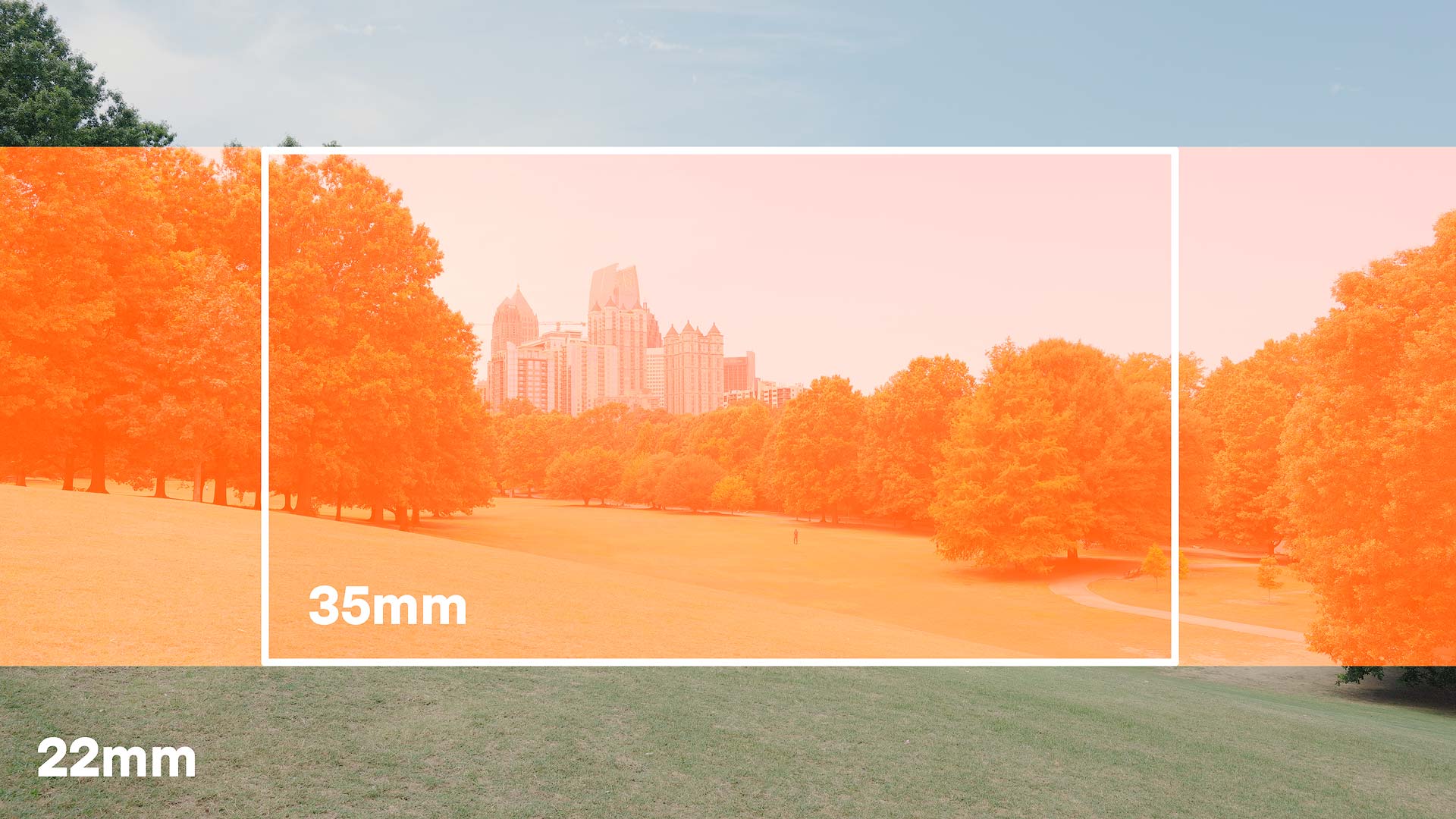
As a result, we get the following image, which has a standard 35mm field of view, but 40% more area added to the left and right. This creates the look and depth of field of a 35mm lens, but with a 22mm wide angle field of view. For me, this is literally the best of both worlds.

Aperture and focusing
The Sirui Saturn 35mm has a minimum and maximum aperture of T2.9 and T16, respectively. Note that these values are t-stops, not f-stops. T-stops are more commonly used in cinematography, and represent the actual amount of light transmitted through the lens. F-stop values are used in photography and represent the ratio of the focal length to the effective aperture diameter.
If confused, just know that t-stop values are typically "close enough" to f-stop, so the Saturn 35mm is ~f/2.8, which is a fairly standard maximum aperture.
The focus ring displays both feet (in red) and meters (in white). Minimum focusing distance is 3 feet / 0.9 meters, which is rather long, but not uncommon with anamorphic lenses.
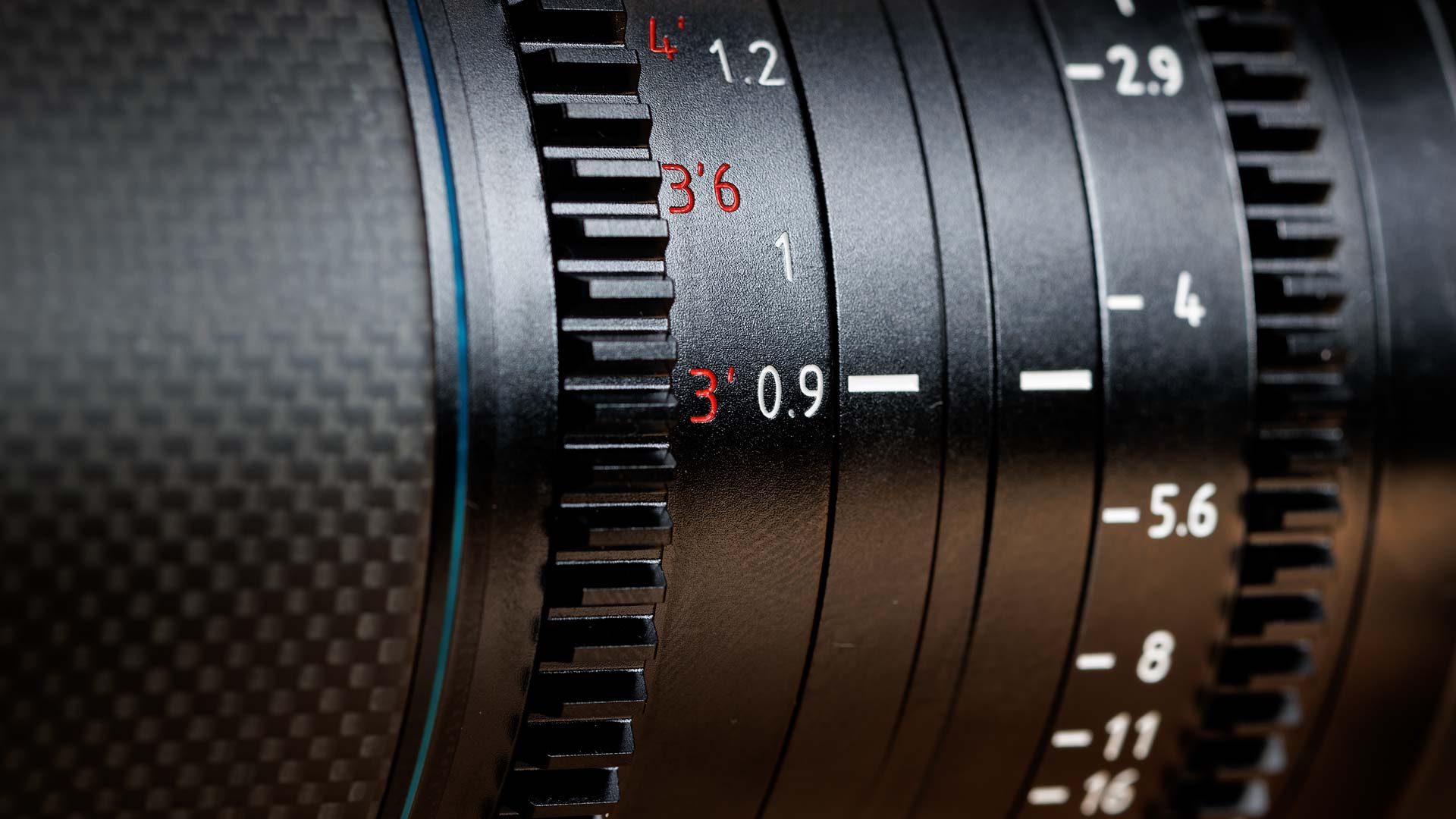
This means a subject must be positioned further away from the camera, which makes it harder to create a shallow depth of field, even when shooting wide open at T2.9. You can see this in the example image below, where the subject (the Yashica camera) feels distant and the background bokeh is decidedly average. On its own, the Saturn 35mm would not be a good lens for portraiture or macro footage.
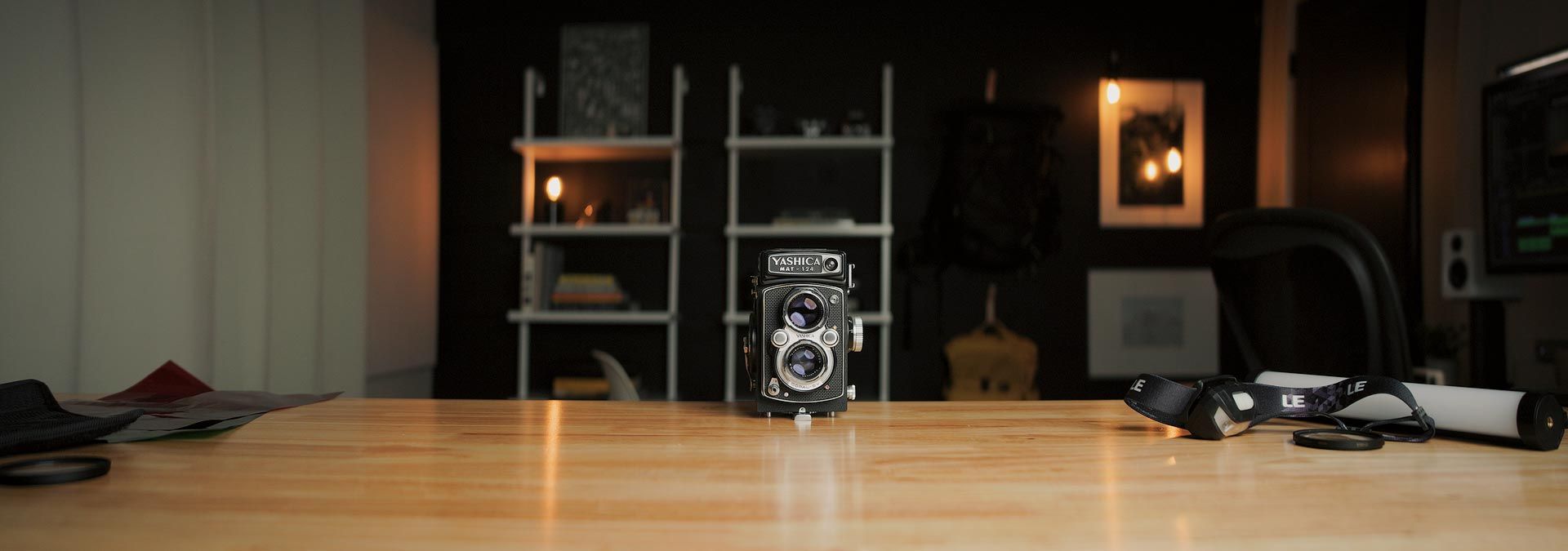
Thankfully, we can shorten the lens' minimum focusing distance using diopters. Using this cheap set of 58mm filters, I was able to bring the subject closer and create nicer looking bokeh (with those characteristically anamorphic cat eye shapes). The examples below were captured using +1, +2 and +4 diopters.



There is some focus breathing when adjusting focus from minimum to infinity and back again (as demonstrated in the video below). This is most noticeable around the edges and corners, which appear to zoom slightly in and out. Breathing would be mostly negligible with smaller adjustments.
Sirui Saturn 35mm focus breathing test
When focusing at infinity, the lens unfortunately rotates a couple of millimeters past the infinity tick mark. This causes slight blurriness at the hard stop. This degrades the user experience, for the user must rotate the focal ring backwards (while previewing the image on the camera or a monitor) to figure out where infinity focus actually is. Perhaps this is something Sirui could look into and adjust in future lenses.
Color, clarity and flares
The Saturn 35mm skews towards yellow and green and adds a slight warming effect. Contrast also appears a bit softer. Footage almost looks color graded compared to the neutral, clinical look typically captured by spherical lenses designed primarily for photography (eg, the Canon RF 14-35mm f/4, as seen below).

Saturn's color cast may be annoying if trying to match footage from multiple lenses, or if color accuracy is important. Personally, it doesn't bother me, for I like the added warmth, and think the tint looks especially nice outdoors. The lens definitely has more visual character and personality compared to a "normal" photography lens.
Anamorphic lenses are also known for their distinctive horizontal flares that streak across the frame when pointed towards a bright light source. For me, a little flare goes a long way, and thankfully the Saturn 35mm doesn't go overboard. Flares are only introduced when a light is small, bright, and shining directly into the lens. I never saw flares shooting in indirect light.
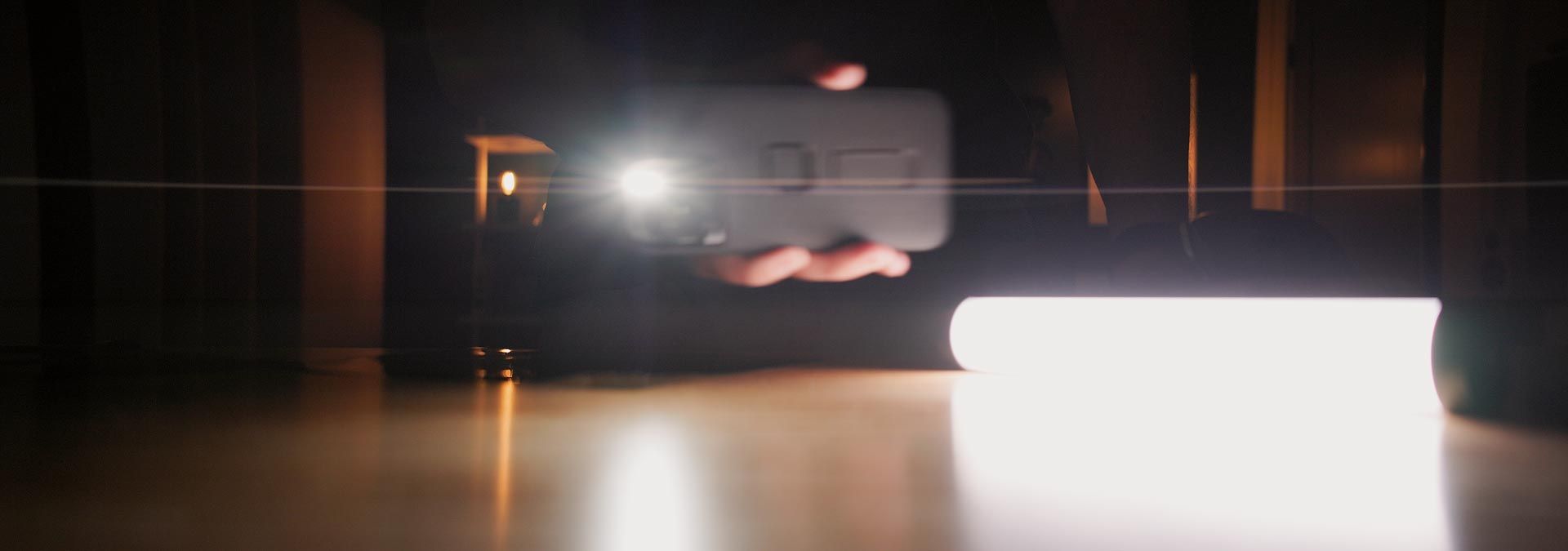
When purchasing the Saturn 35mm, you have a choice between blue or natural lens flares. I went with natural, for then the flare uses the color of the source light, and because it feels more organic. Blue would be nice for night shots, tech/sci-fi content, etc, but it's not my preference.
Sharpness and clarity wise, I think the lens is plenty sharp for video. It's a little softer than other Canon RF "L" series lenses I own, but I almost always mount some kind of diffusion filter anyway (eg, the excellent Tiffen Glimmer Glass) to soften contrast and knock back digital sharpness and clarity, so I'm happy with the level of clarity and detail provided by the Saturn 35mm.
Configuring an EOS R camera for the Saturn 35mm
The Saturn 35mm does not electronically communicate with Canon EOS R cameras, so there's no auto focus, no lens corrections, no aperture control, or other similar features. The camera simply has no idea what type of lens is connected.
For the lens to function, the camera's "Release shutter w/o lens" setting must be set to "On" (it's "Off" by default), otherwise video will not start or stop recording. Access this setting by pressing the Menu button on the back of the camera, tap the orange camera icon at far right, then navigate to screen four. There you'll see the applicable setting (pictured below).
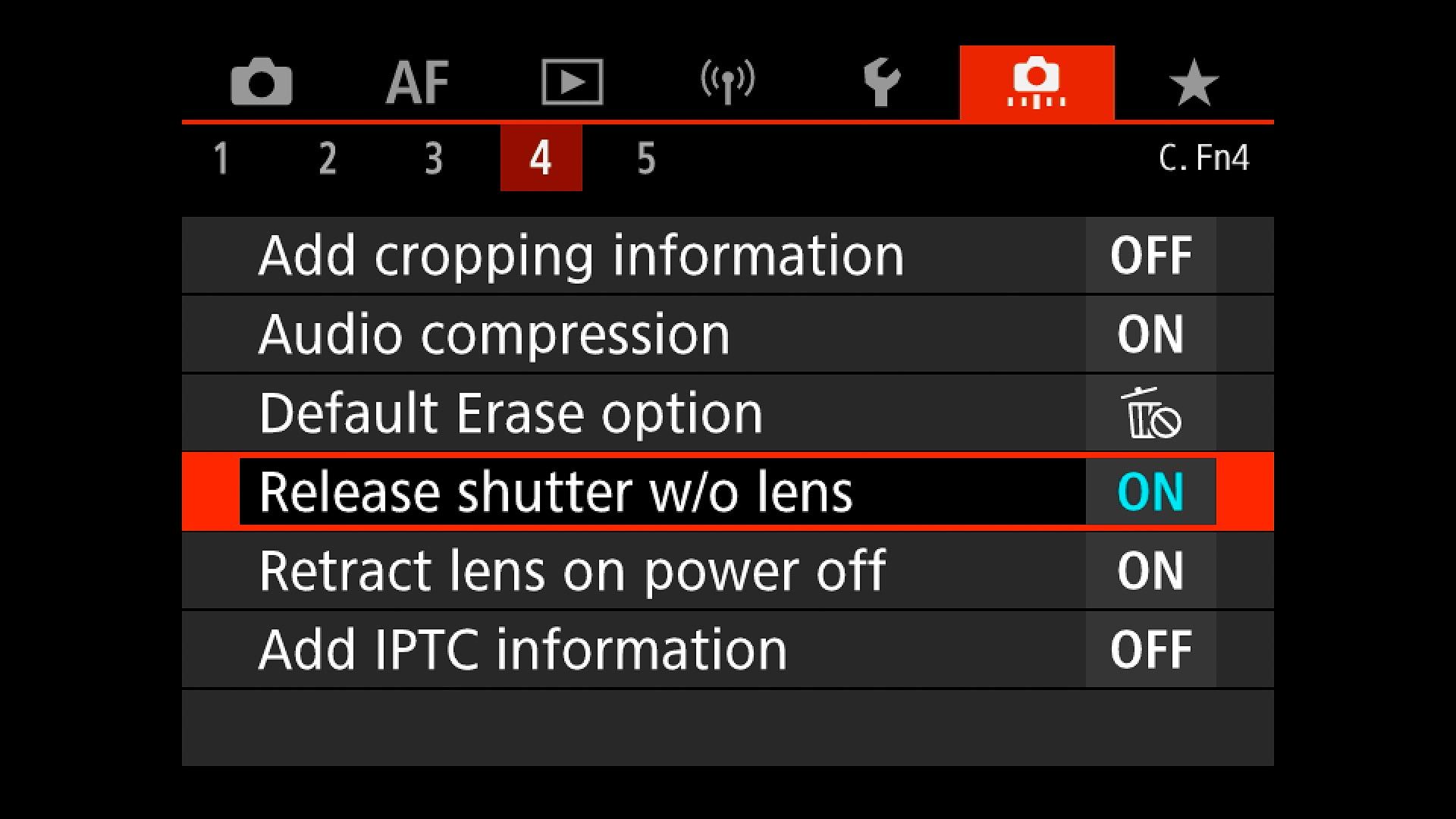
Another setting to check is Image Stabilization, available on screen 7 of the first, red camera menu. Tap on "IS (Image Stabilizer) mode", and there you will see options to enable in-body image stabilization, digital IS, plus an option to assign focal length (because the camera can't communicate with the lens).
Should you enable image stabilization? You may want to if shooting handheld without a gimbal, but you will see some wobble and warping around the edges of the frame, which is true for any lens on a Canon EOS R series mirrorless camera. For optimum stabilization, a gimbal with image stabilization in the camera turned off would likely produce better footage without wobble and distortion.
De-squeezing footage while shooting
My favorite way to shoot video with the Saturn 35mm is with an Atomos Ninja V monitor. With the Ninja, I can de-squeeze the anamorphic signal from the camera and see a realistic preview of how the footage will actually appear. This makes composing an image easier and more accurate than using the squished live preview on the camera's rear screen.
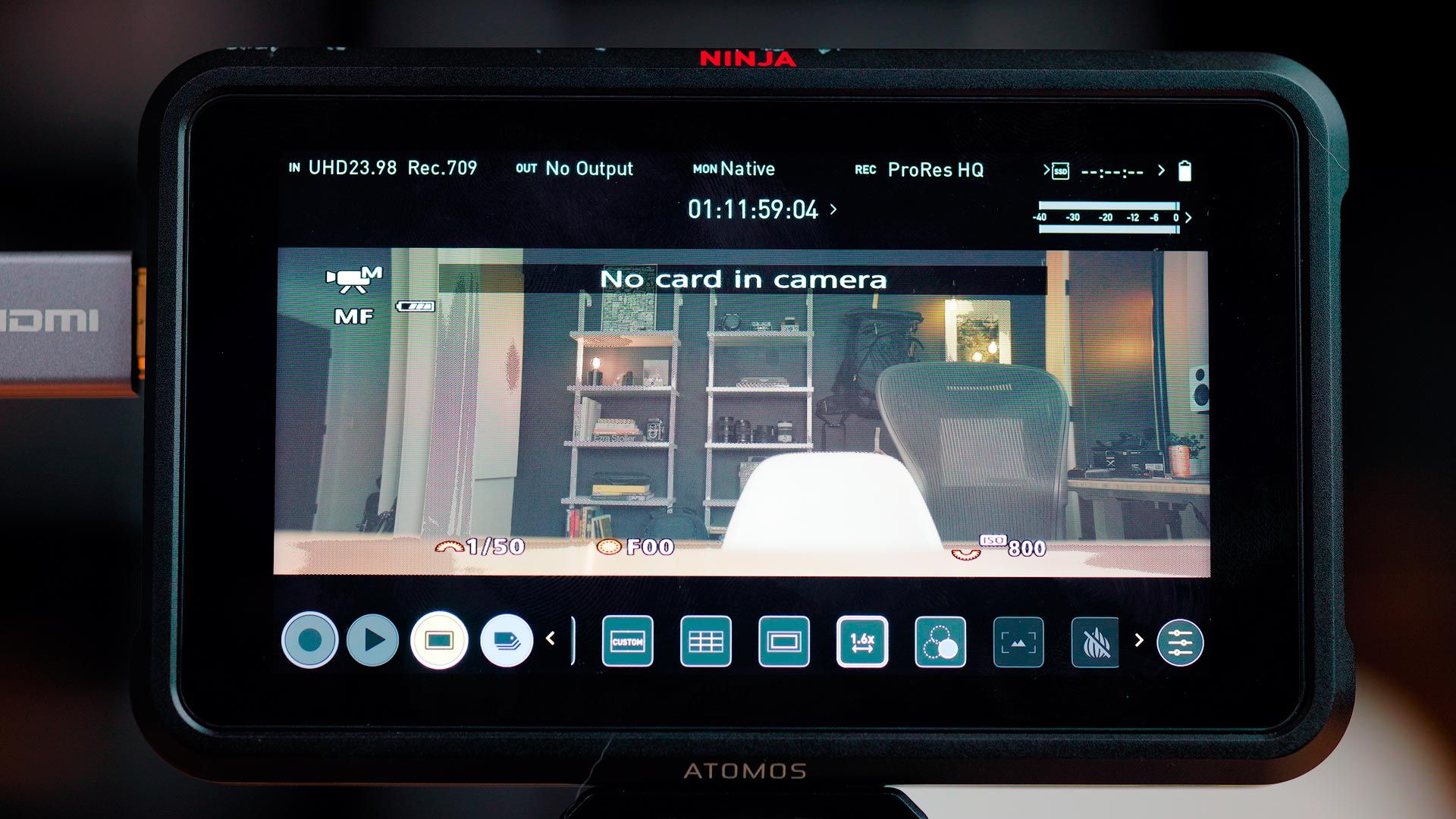
At the time of this review, the latest firmware for the Ninja V includes a 1.6x de-squeeze option that perfectly matches the Saturn 35mm. If you don't see 1.6x as an available option, you need to update the Ninja's firmware.
De-squeezing footage in post
Video shot using an anamorphic lens isn't usable straight out of camera. That's because the image is squeezed horizontally to fit the width of a full frame, 3:2 camera sensor. As a result, 16:9 video will appear stretched and a bit weird, as seen in the following example.

This can be easily fixed in any video editor, but because 1.6x is an unusual horizontal squeeze factor (1.33x and 2.0x are more common), you may need to stretch the footage manually. If so, change the width/height of your 16:9 footage from 100% to 100%/62.5%. This will desqueeze the footage and display it at its intended aspect ratio (2.4:1), with black letterbox bars on top and bottom.
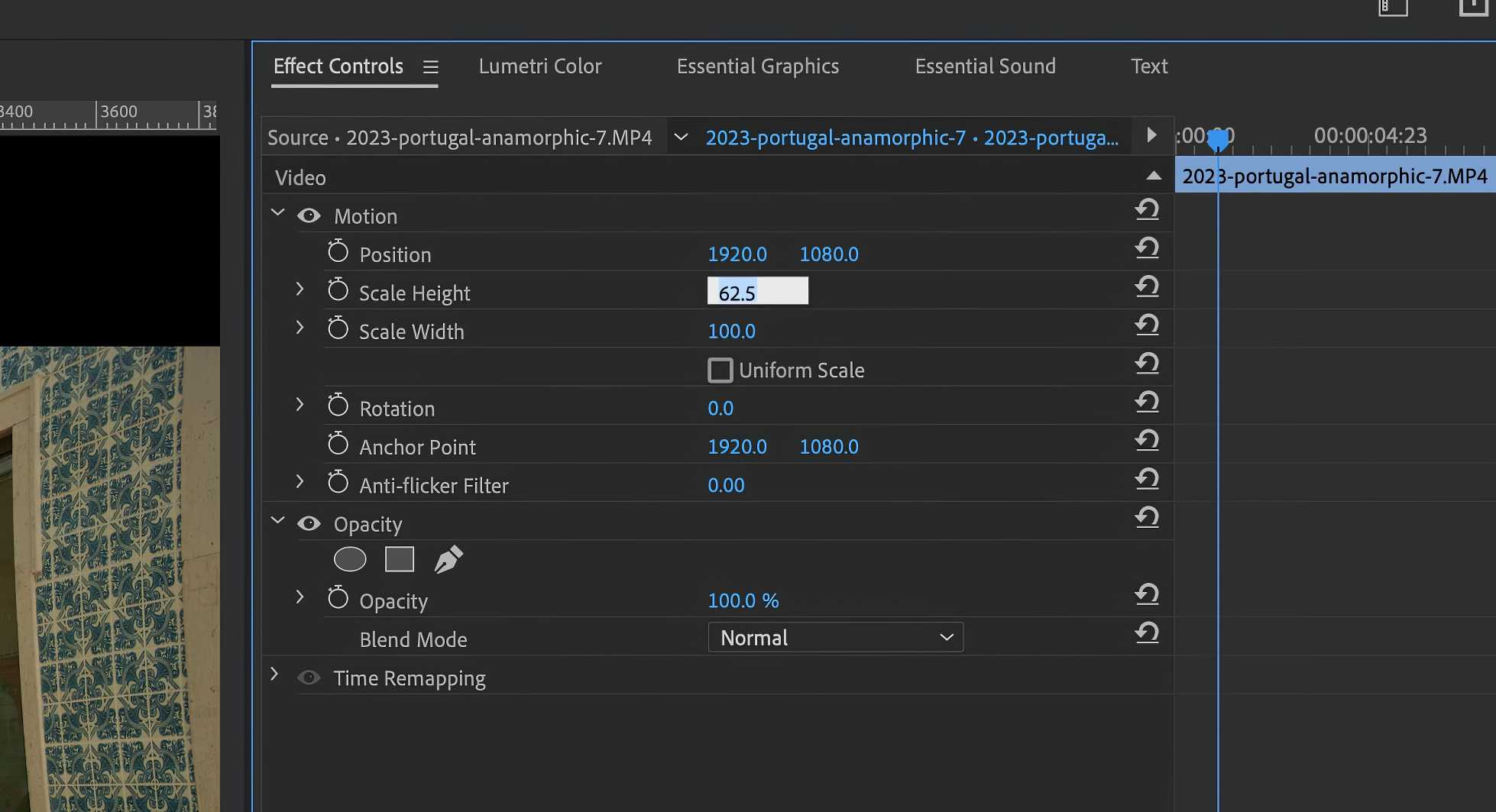
If you don't want the letterbox look, change the sequence/timeline resolution to 3840 x 1350px. Platforms like YouTube should then display the video at its proper aspect ratio without black bars, similar to the image shown below.

Anamorphic for still photography?
I was curious to see if the Sirui Saturn 35mm could shoot ultra-wide angle, panoramic-style still photos, but in practical use I wouldn't recommend buying this lens for still photography.
Images must always be de-squeezed in Photoshop (or other image editor), and there are no lens correction profiles for Sirui lenses in Lightroom or Camera Raw. The latter means any distortion, chromatic aberration and/or vignette will need to manually corrected. I also noticed quite a bit of chromatic aberration when shooting high contrast outdoor scenes, as evidenced by the thick purple fringing around the tree in the image below.

The Saturn 35mm may perform okay when shooting photos of low contrast scenes, but if I wanted the ultra-wide panoramic look with my still photography, I'd do it the old school way by shooting a series of vertical still images using a spherical lens, then stitching/merging them together.
In my opinion, the Saturn 35mm is a video lens, only.
Final thoughts
The Sirui Saturn 35mm is a unique lens for a specific target audience of indie filmmakers, videographers and content creators who want the big budget Hollywood blockbuster look on the cheap (comparatively speaking, of course). $1299 is still a good chunk of change for a manual focus lens without optical image stabilization, but it is a unique lens that can produce fantastic images in the right hands.
I believe the most important thing to think about if considering the Saturn 35mm is how much use you'll likely get out of the lens. 2.4:1 is not a convenient aspect ratio for YouTube or social media channels, and clients might prefer 16:9/9:16 over video with "cinematic" dimensions. 2.4:1 can also be challenging to mix with 16:9 video on a 4k timeline, for some footage would be letterboxed, others not, or the anamorphic footage would require upscaling, which might lower image quality and resolution.
Anamorphic is, in other words, a deliberate choice that must be committed to in order to get the best, most consistent results.
I would absolutely shoot video with the Saturn 35mm on a landscape photography trip, for I love the lens' ultra-wide, yet natural field of view; especially in outdoor environments. If the Saturn 35mm were larger and heavier, I'd likely leave it at home and never use it. But because the lens is so small and lightweight, I can easily pack and bring it along.




